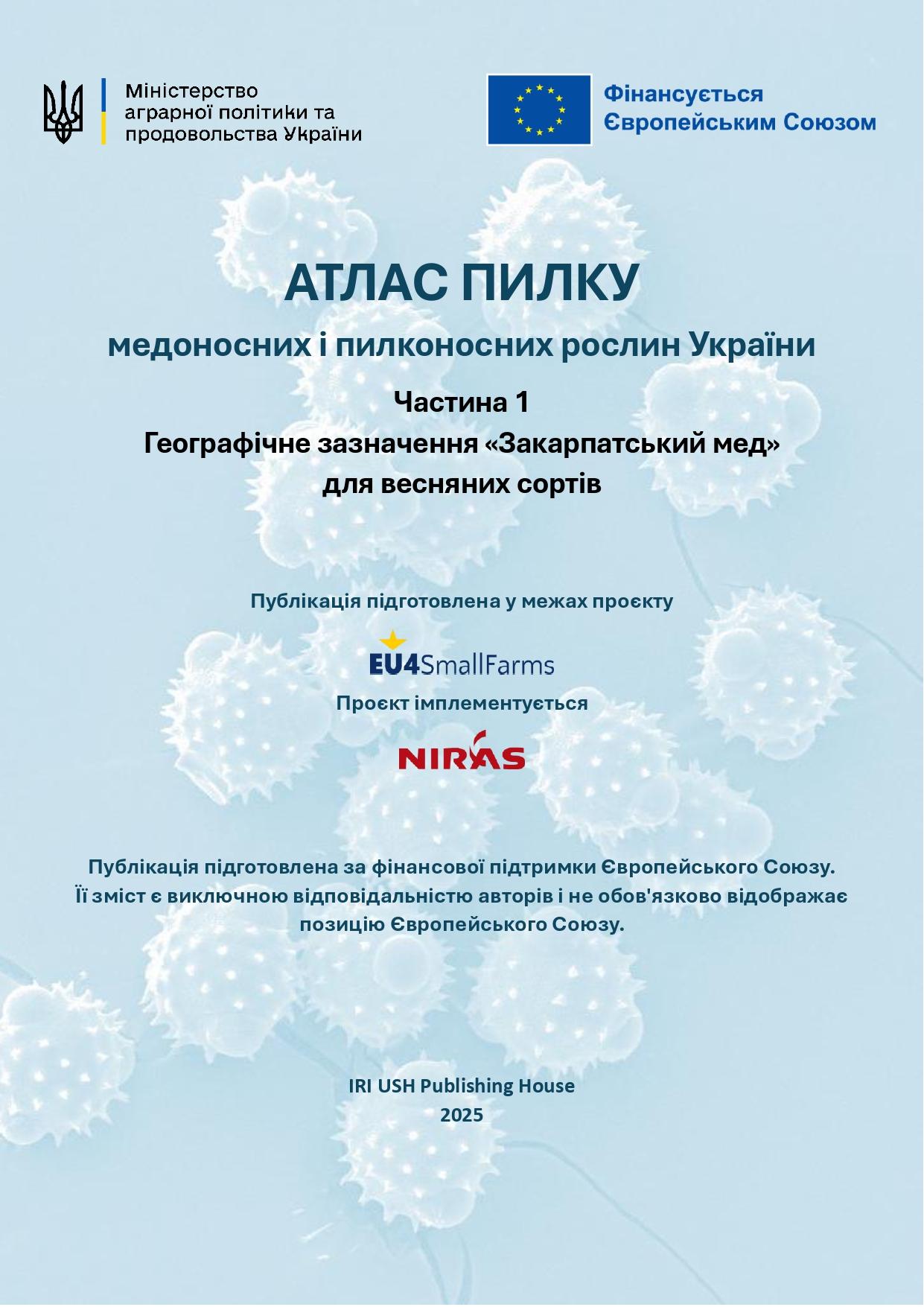Pollen Atlas of Nectariferous and Polleniferous Plants of Ukraine. Part 1: Protected Geographical Indication “Zakarpattia Honey” for Spring Types
Synopsis
Pollen grains from plants serve as key indicators of the botanical and geographical origin of honey. In 2024, this topic received heightened scientific attention, with more than 8,000 professional publications evidencing its relevance. The primary tool for honey authentication is the "Pollen Atlas", the development of which has become vital for the survival of honey producers and the beekeeping industry at large.
One of the main drivers behind the creation of the "Pollen Atlas" is the urgent need for Ukrainian products to align with European Union standards—resulting from both legal harmonization and active trade relations. In particular, new EU regulations on establishing geographical origin require strict authentication, as outlined in Directive (EU) 2024/1438 of the European Parliament, issued on 14 May 2024. Non-compliance with this directive threatens honey export viability, especially given Ukraine's current role as the largest honey supplier to the EU.
Moreover, product authentication is a vital mechanism for protecting consumer rights in accordance with EU food law principles. Determining the botanical origin of honey ensures traceability, accurate labelling, and safeguards against adulteration. A recent study by the EU Joint Research Centre revealed that 46% of honey samples collected within the European Union are likely to be fraudulent.
The "Pollen Atlas" contributes directly to the achievement of several Sustainable Development Goals (SDGs)—specifically Goals 2, 3, and 12: "Zero Hunger and Agricultural Development," "Good Health and Well-being," and "Responsible Consumption and Production." It is also expected to have an indirect positive impact on at least four additional SDGs.
Ukraine, with its rich and diverse flora, possesses a unique potential for developing nectariferous and polleniferous resources, supporting sustainable beekeeping and the production of high-quality honey.
This "Pollen Atlas of Nectariferous and Polleniferous Plants of Ukraine" is intended for researchers, honey producers, laboratory professionals, and all those interested in the plant world and apicultural production processes. The Part 1 focuses on spring honey types with a Protected Geographical Indication (PGI): "Zakarpattia Honey". It contains detailed information on the morphological features of pollen that shape the distinctive characteristics of this regional honey.
This publication was produced as part of a special project funded by the European Union. The materials presented reflect the results of thorough scientific investigation and do not necessarily represent the official views of the European Union.
We hope this Atlas will serve as a valuable source of knowledge and foster deeper understanding of the complex biological processes that determine the quality and uniqueness of Ukrainian honey.

